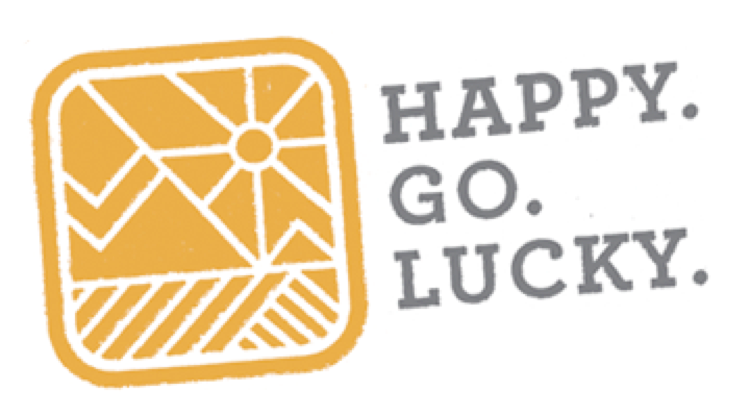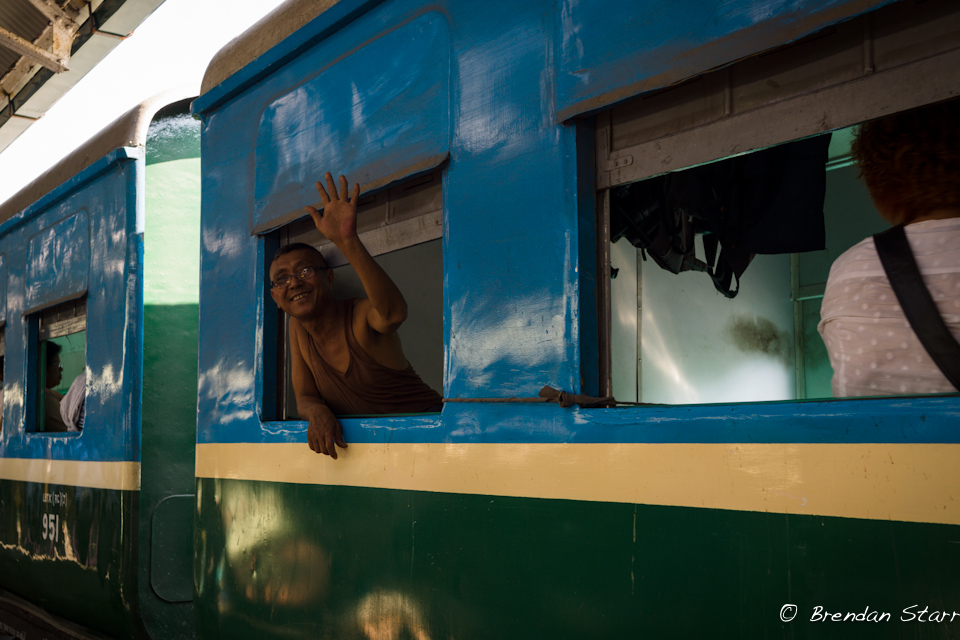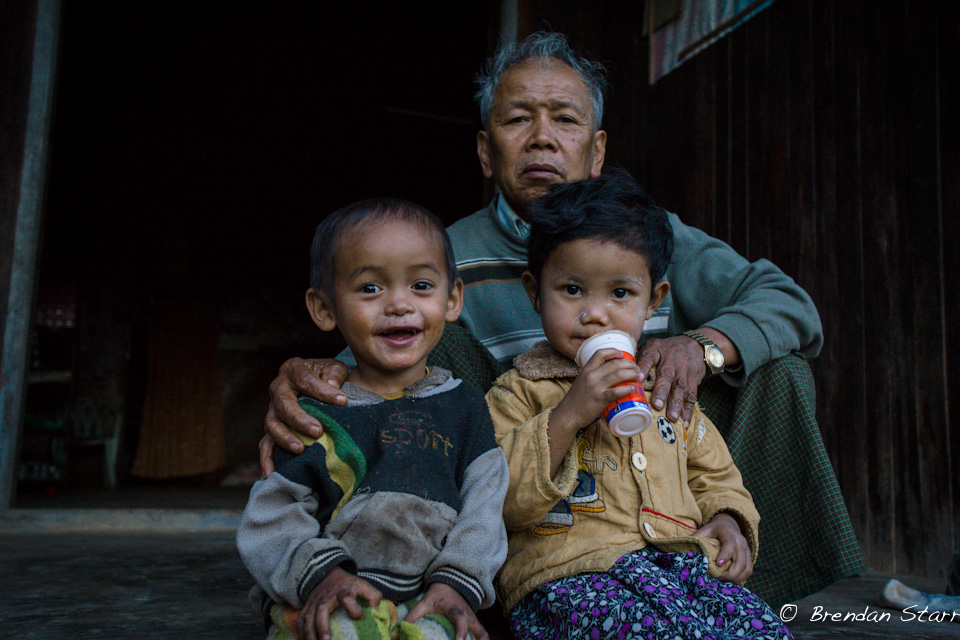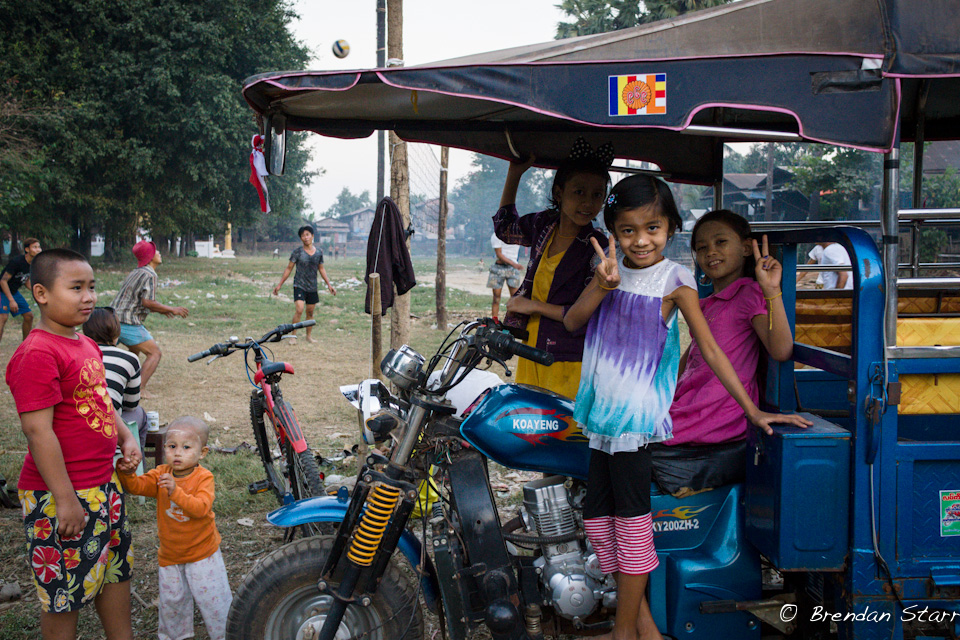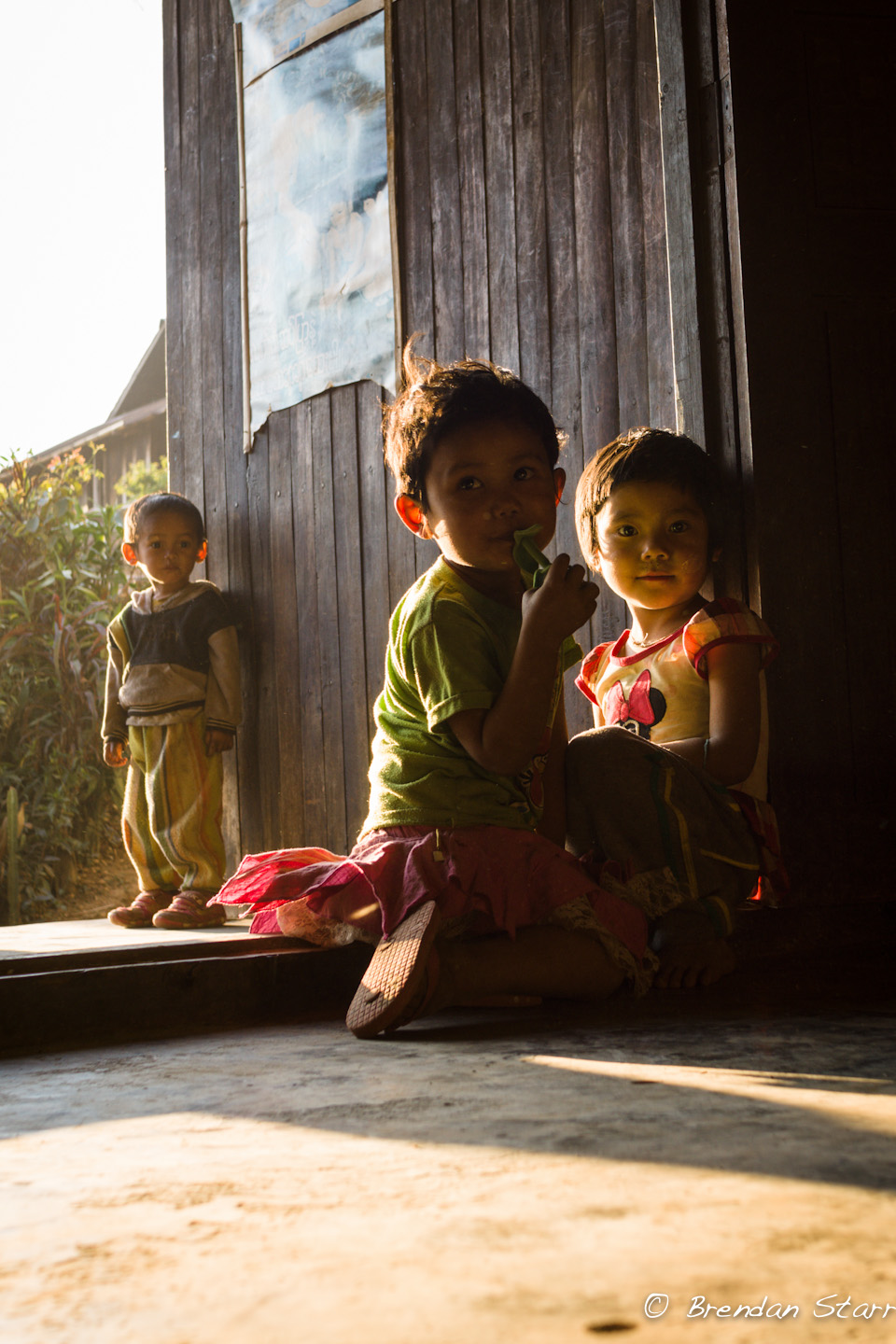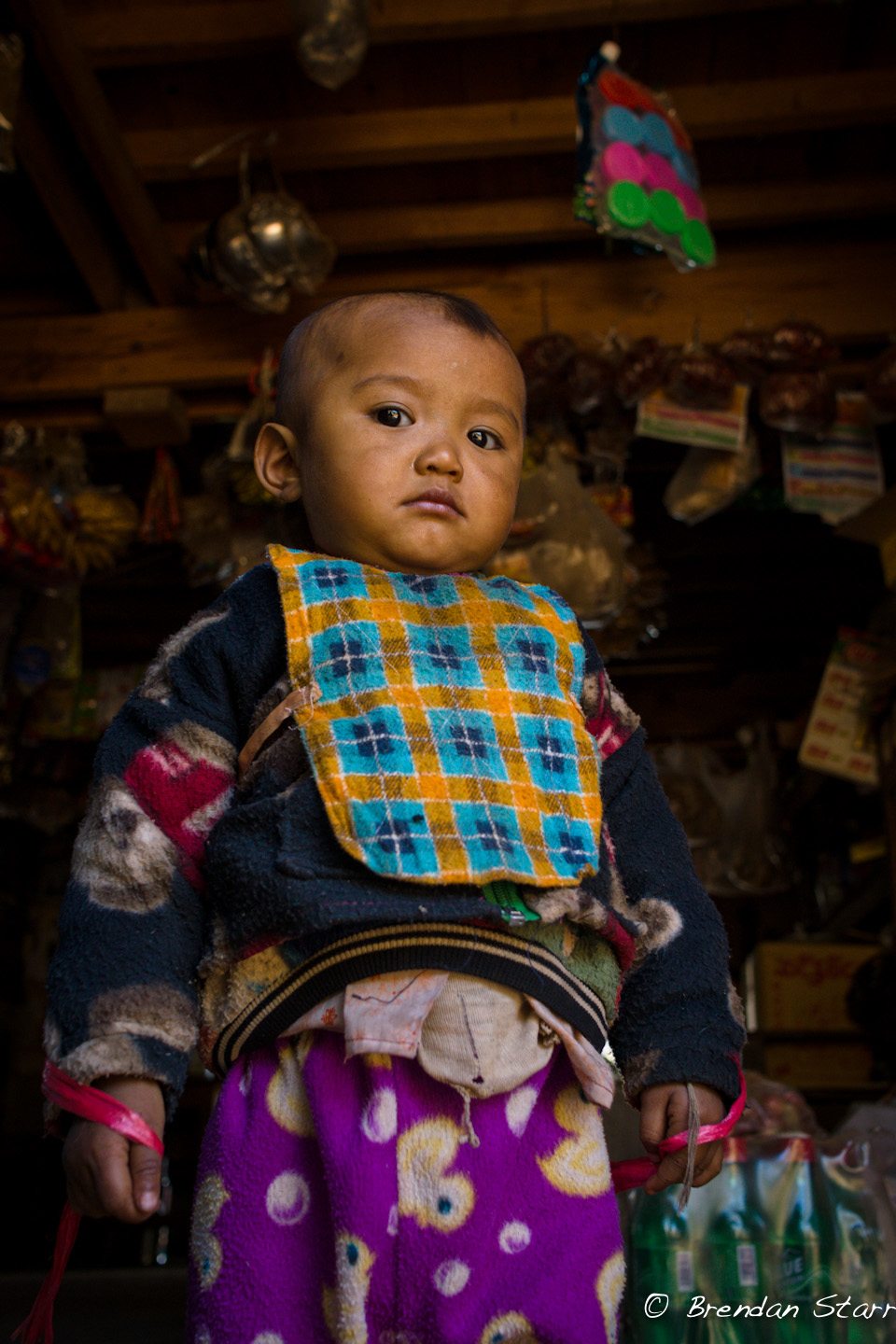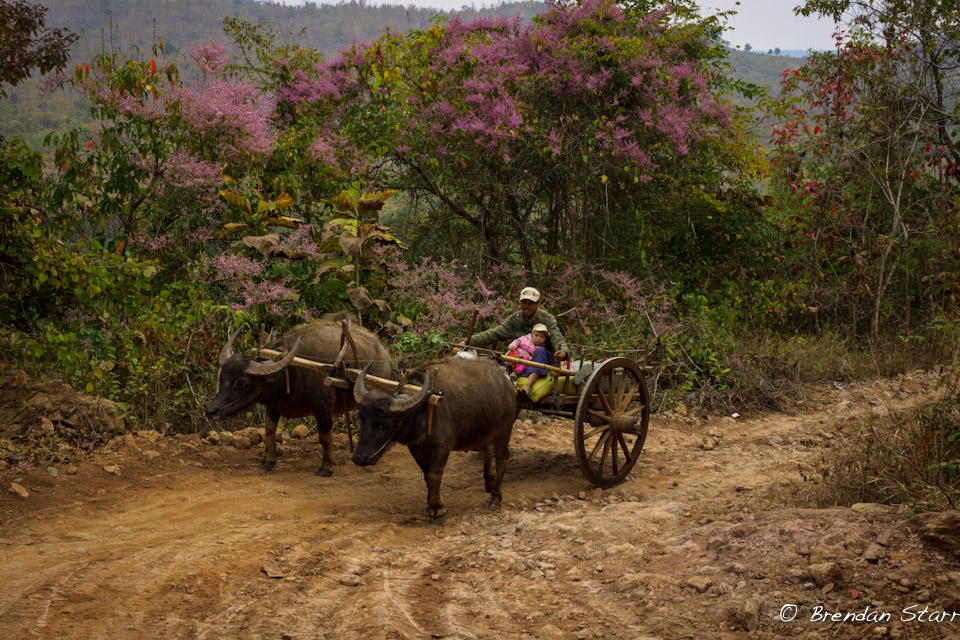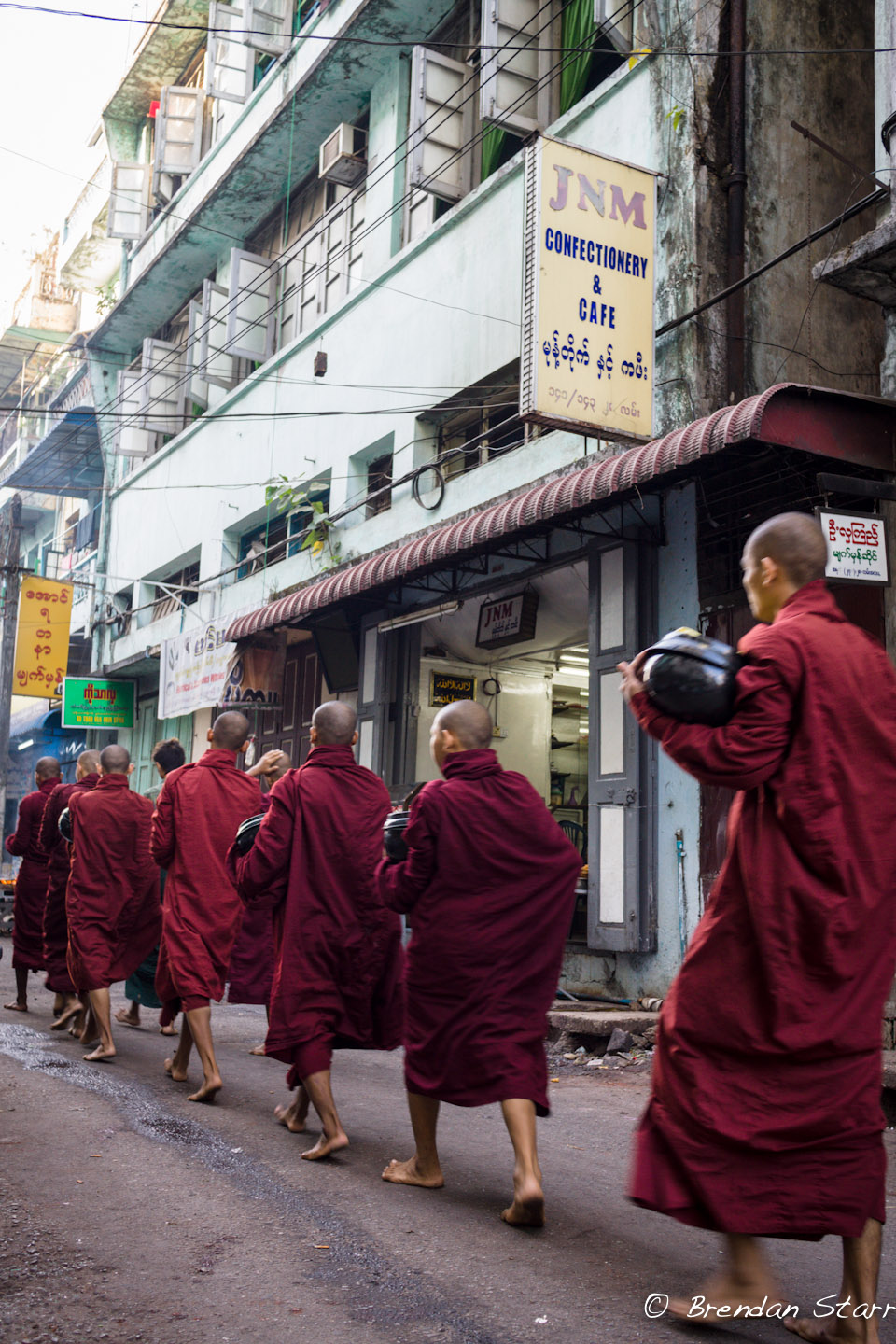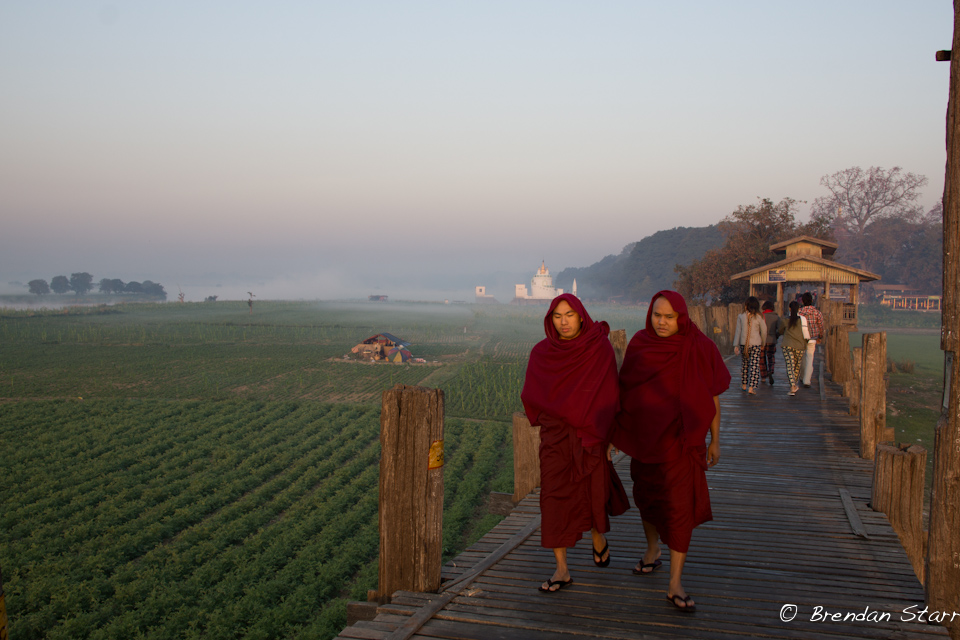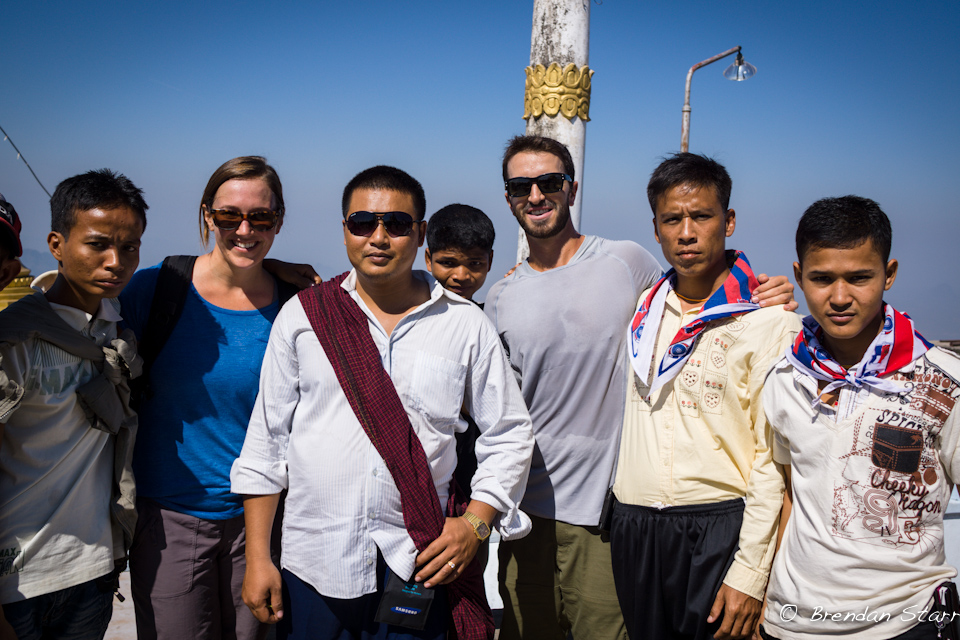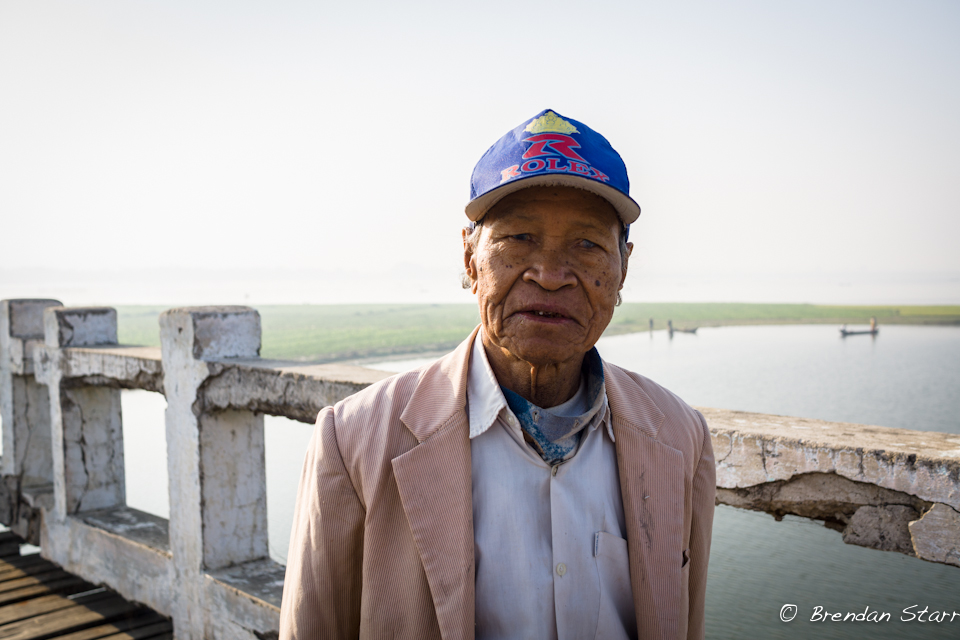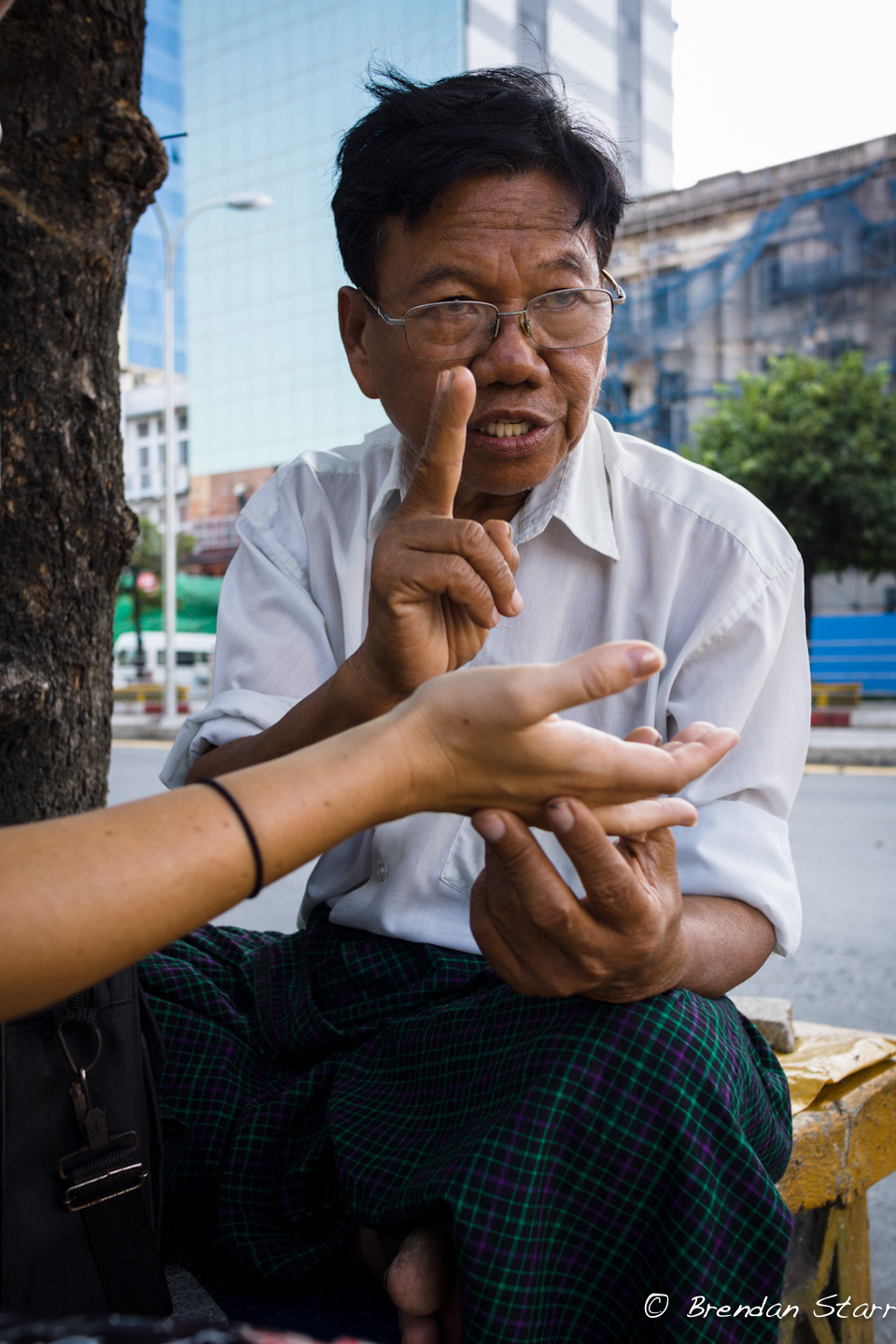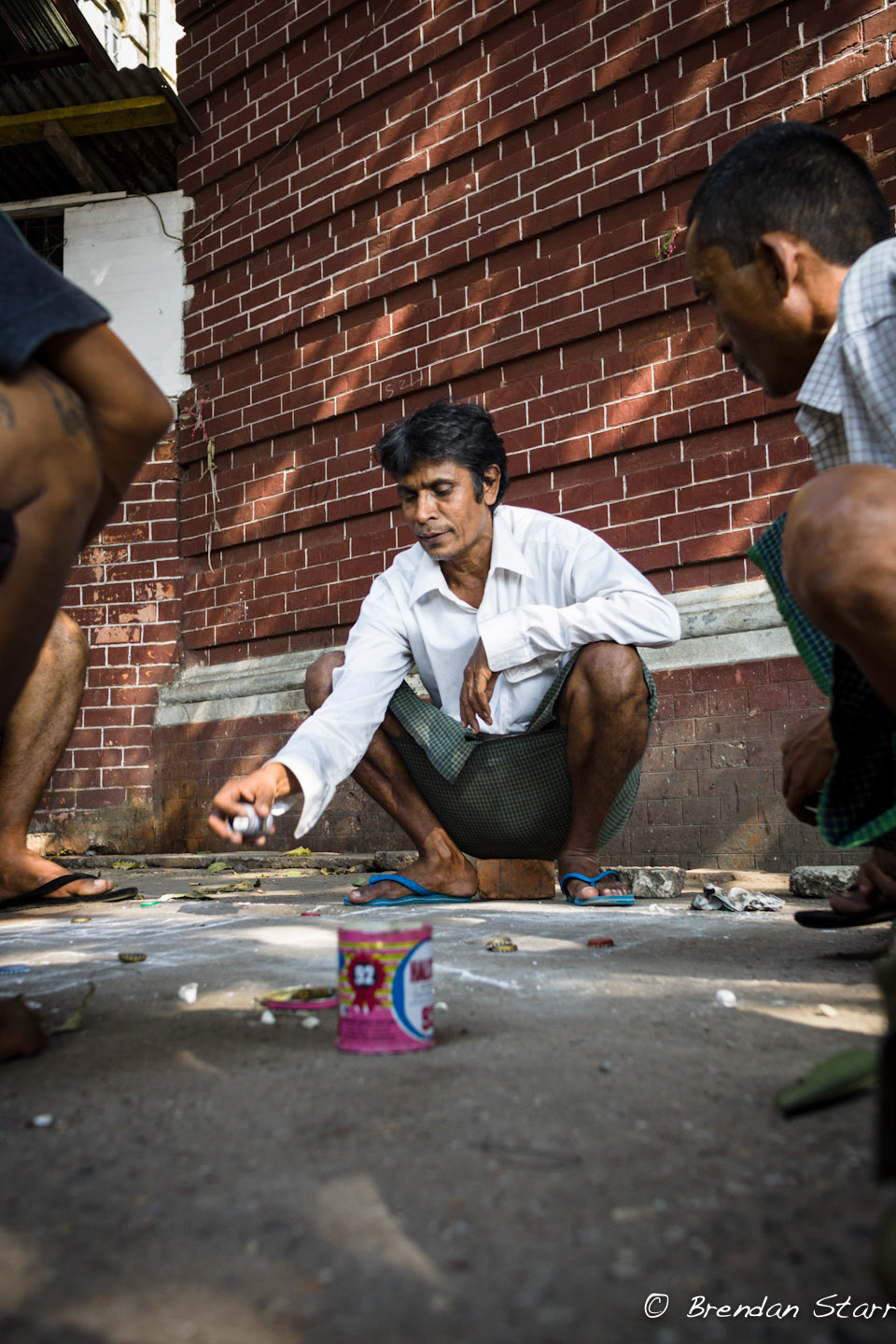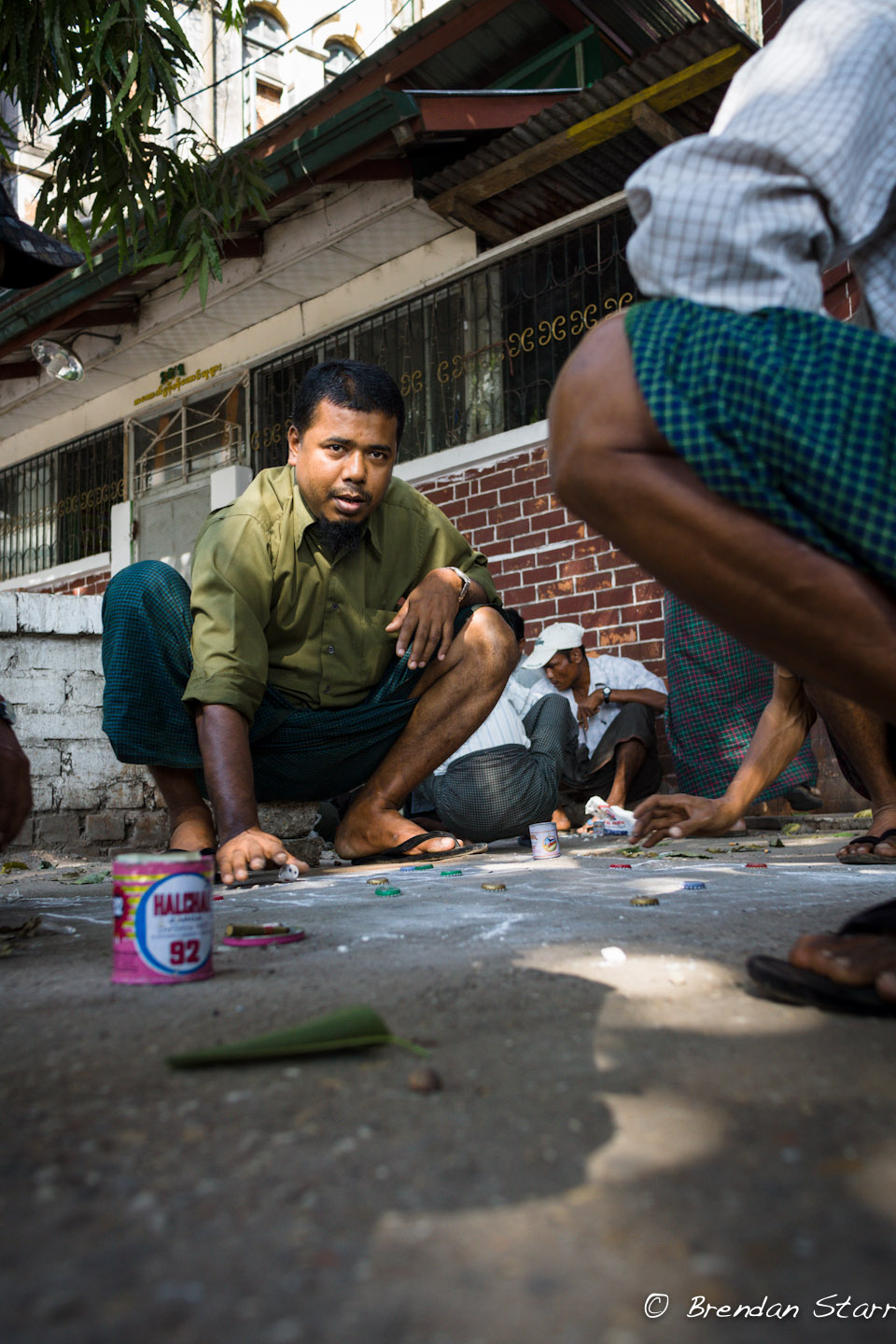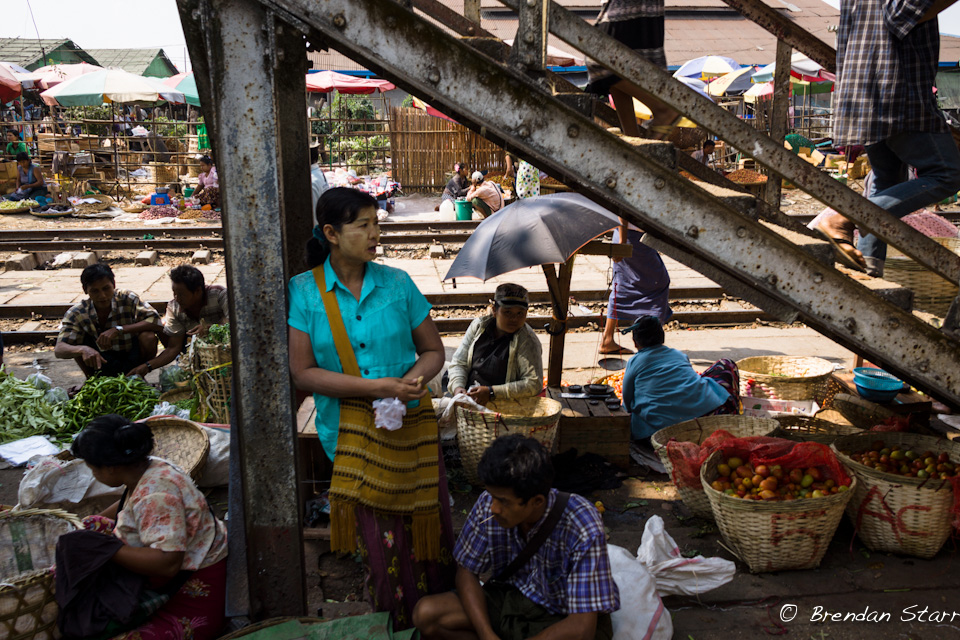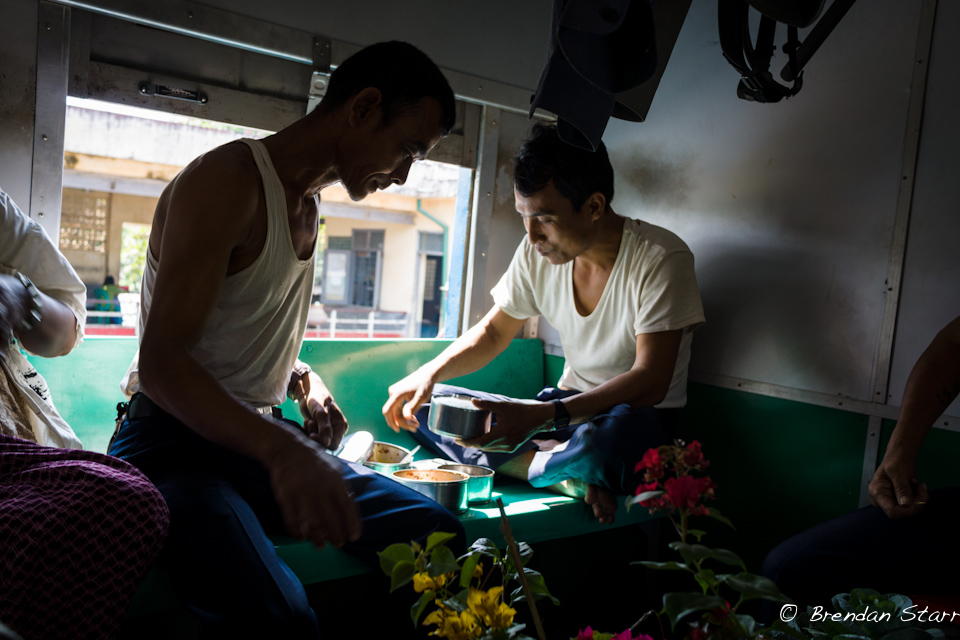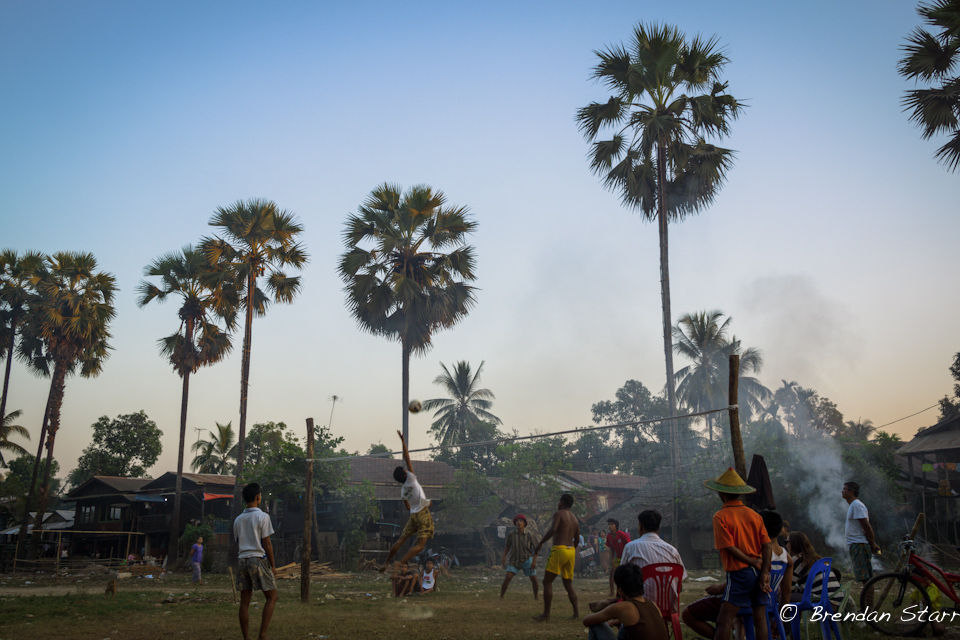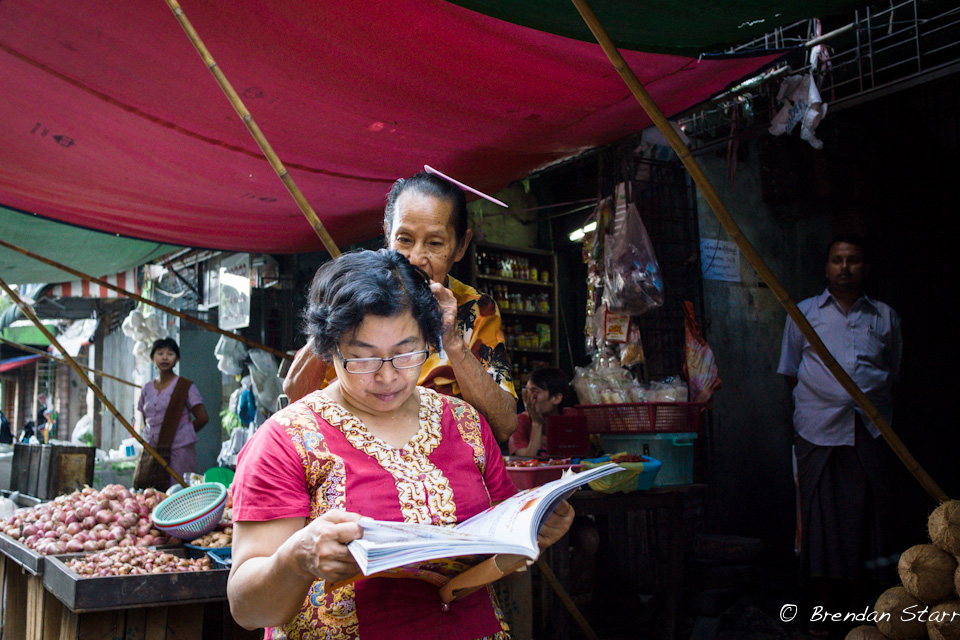Mr. All Night and the Path to Enlightenment
It didn't take us long to realize that religion plays a huge role in Burma. It is a country of pilgrims and pagodas, and most of the sights worth seeing are sacred. Looking back on our first week, it seems like we were on our own pilgrimage in South Burma and we have the sore legs to prove it.
Flying into Yangon the first thing you notice is the famous gilded stupa of Schwedagon Pagoda. It rises up out of the flat skyline, providing a stark contrast to the gray city around it. It's beautiful at every time of day. At sunrise and sunset, the tower turns red in the changing light. During the day, the sun catches it's smooth surface and reflects like a beacon for tourists and worshipers. And at night, even when the rest of the city is without power, spotlights shine on the 330 foot tower, making it glow.
We visited Schwedagon in the late afternoon, climbing the first of our many steps in Burma to the top to walk clockwise, in the Buddhist tradition, around the main pagoda. Along the way we stopped at alters marked for our birth "days", Friday for Brendan and Wednesday for me, to light a candle given to us by a palm reader we had visited earlier that week. Astrology and fortune telling are a big part of people's lives in Burma and work hand-in-hand with Burmese Buddhist practices. So, one day while we were wondering the city, we sat down under a tree and had our palms read. Not surprisingly, Brendan's social/communication line was long and strong, my learning/leadership line was looking good and our prosperity/fortune lines were both extremely weak. Luckily, lighting the candles he provided (at extra cost, of course) on our birthday alters should correct course, so even though our bank accounts are still dwindling, we're feeling good about the future.
We settled into a good spot to watch to sunset, hoping to catch a glimpse of the 76 carat diamond refracting the fading light and were blown away by Schwedagon's beauty and spirituality.
But the real religious experience in Yangon for us was the incredible mix of cultures represented in the city - Burmese, Indian, Bangladeshi, Chinese, Muslim, Hindu, Christian, Buddhist. Walking down the street, it was easy to imagine ourselves in half a dozen different countries. We were surrounded by different features, languages, dress, and, most importantly, food. We ate mohinga, a traditional Burmese breakfast dish of noodles, fish sauce and banana stems that sounds weird but tastes delicious. We slurped Chinese chicken soup with homemade wontons. We snacked on Indian samosa salad, lassi and dosa. And we discovered the best tea in the world - a mixture of tea, spices, cream and condensed milk that we are determined to replicate. Tea houses are everywhere in Burma, from actual storefronts to pop up cafes on the street and I think we went to every single one for tea and chipati.
From Yangon, our pilgrimage took us to one of the most sacred sites in Burma: Golden Rock. To see it as an outsider is a contradictory experience. It is the most pilgrimaged site in the country. In fact, in almost every home we visited in Burma, there were photos of the family at Golden Rock. And we were told by many others that is the first place they would visit if "they could go anywhere in the world." In reality, it's a rock that somewhat seems to be balancing on the edge of a mountain covered in gold leaf, sacred because of its precarious position and the legend that strands of Buddha's hair are enclosed inside. It sounded strange enough for us to see for ourselves.
Getting to Golden Rock was a bit of a process (even more since we took the night train from Yangon which put us into town before sunrise). At 6am, we piled into the back of a pick up truck with about 45 pilgrims and one other tourist, and drove up a steep mountain pass completely at the mercy of the truck driver, and finally let out at the bottom of a smaller road. From here, it was a 45-minute walk up to the Golden Rock, unless you paid $10 for four Burmese to schlep you up the path like Cleopatra. Brendan was very tempted, but in the end we forged ahead on our own two feet. At the top, we saw the rock, which to us outsiders was pretty much just that. Plus, the government has built hotels, shops and restaurants around the Golden Rock site, so it has a very Disney-land like feel. But we have to admit that the view was incredible. It was the first strange religious site we'd seen, but certainly not the last.
The very next day in Mawlamein, we had our second encounter. The small sea-side town in Southern Burma is known for two things: a quiet, coastal getaway from Yangon and the largest reclining Buddha figure in the world. Yes, please. After seeing the reclining Buddha in Bangkok, covered in gold and ornately designed, we were prepared to be awed. Instead, we were a bit shocked when we pulled up and saw a four-story tall crumbling-concrete reclining Buddha that would look at home in cold-war era Russia. Or, as a villain's lair from Austin Powers. The truth is that it was just built hastily with poor quality materials in 2007. It's actually hollow so you can walk inside, but you have to share the space with a wax museum of graphic, violent scenes from we don't know where. A little creeped out, we left to catch our breath and sunset at a beautiful viewpoint above the town.
Ready to leave the giant Buddha behind us, we headed to Hpa'an by way of a scenic river ferry ride the next morning, unaware that the path to enlightenment was about to get real. There are a number of sites in Hpa'an worth visiting, mostly sacred caves scattered around town. Since we'd seen our fair share of caves in Laos, we opted for the "hike" up to Mt. Zwegabin monastery instead. This was one of those instances in our trip where a little research outside of the Lonely Planet could have gone a long way. The "hike" consisted of nearly 4,000 stone stairs, up the exposed face of the mountain. Since we came unprepared, we started climbing around 10am, late enough to put us in the heat of the day on the way up and down. To make matters worse, Brendan was just starting to feel a stomach bug and didn't have much in his stomach for sustenance. I swear, if the pilgrims we passed on the way up had not been so friendly and supportive, we might have turned back.
But everyone smiled and offered kind words, even though most of them were in worse shape than us. There were women who looked 50 to 60 years old walking in bare feet and carrying baskets of offerings all the way up. There were men dressed in their "Sunday best" under the heat of the sun. But you could tell just from looking at them that the journey was very much a part of the destination. That the struggle made the reward more complete somehow. It was the first time in Burma we truly understood the spirit of the pilgrims. And we felt blessed to be with them.
Finally at the top, we didn't have much time to reflect or recover before we were surrounded by locals asking to take photos of or with us. It had happened a few times since we'd arrived, but after that day, there must be sweaty pictures of us all over Burma. The monastery offered free lunch to visitors, so we sat with a Belgium couple and refueled before the even more grueling hike back down the 4,000 steps. For the next two days, we could barely walk.
Luckily, we had some entertainment in the form of Mr. All Night and his friends. We had met Mr. All Night (whose name is not actually "All Night" but sounds so much like it we laughed out loud the first time he said it and it stuck) a few days before when we played volleyball with a group of local men. They had invited us back for more games and beers, but since our bodies were so destroyed, we cheered from the sidelines and tried to drink double to make up for it. Mr. All Night, his brothers and his friends turned out to be some of our favorite people in Burma. They kept us laughing (painfully, I might add) for the whole night before we wobbled back to our guesthouse.
We took a few days off from the pilgrimage to recover and get our minds, bodies and spirits ready for the next sacred stop, the land of 2,000 temples: Bagan.
